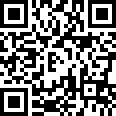Up until pretty recently I spent most of my life soldering speaker wire and crossover components for speakers. This meant mostly wires twisted around wires or big resistor leads twisted around inductors and capacitors. At that level soldering doesn't really get any more complicated than what I did in the previous step. Lots of the projects on Instructables, however, use smaller electrical components and circuit boards, so I figured I would give that a try too.
presolder brass fittings,presolder
Bronze Fittings,
presolder copper fittings Soldering on a circuit board takes a little more care and attention, but it's still very doable. I pushed a few of the leads from some spare LEDs and resistors that I had from my LEDs for beginners post through some open holes in a circuit board that was lying around. I soldered the leads onto the bottom of the circuit board where the electrodes push through. This is called through hole component soldering.
To solder the LEDs and the small resistors to the circuit board I switched to the adjustable temperature soldering iron. The tip was smaller so it would be easier to get the solder right where I wanted it, and using the soldering gun on a circuit board is probably way more heat than necessary and it could end up damaging the components. I set the temperature of the iron to 675 degrees Fahrenheit and waited for the tip to heat up. I then loaded the circuit board into the alligator clips and got myself ready to solder - iron in one hand,
solder ring brass fittings,
solder ring bronze fittings,
solder ring copper fittings,coil of solder in the other.
When soldering leads into circuit boards you want to heat the metal contact on the board and the lead itself. Applying too much heat can damage the circuit board or even your components. The surfaces being joined in this application were much smaller than the twisted wire, so things heated up a lot faster.
I touched the tip of the iron to the crack between the lead and the metal pad on the circuit board. After waiting a couple of seconds, I dipped the tip of the solder into the joint and placed a very small amount of solder at the connection - no more than the head of a pin or so.
Once the solder pooled a bit and soaked into the joint I removed the solder wire and then the iron. I remove the solder a second or two before I remove the iron so that the tip of the solder doesn't get stuck to the joint. The solder begins to harden as soon as you remove the iron.
Using the proper amount of solder is more important while soldering small components on a circuit board than when soldering wires. If you apply too much solder and it pools up outside of the metal pad, it can cause a short. Too little solder and your component won't make a good connection with the circuit board and might not work the way you want it to. When you've got the right amount of solder it looks like a small ant hill that forms right at the base of the lead and the circuit board.



